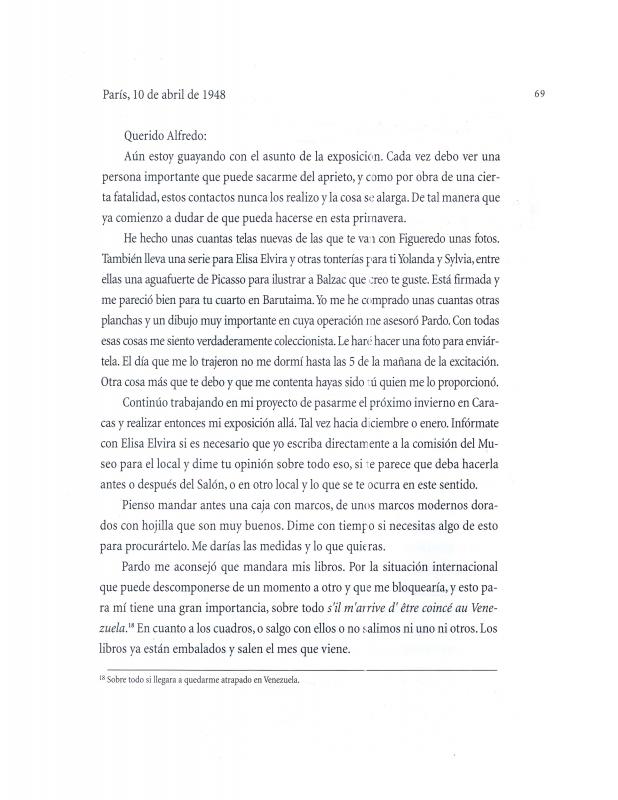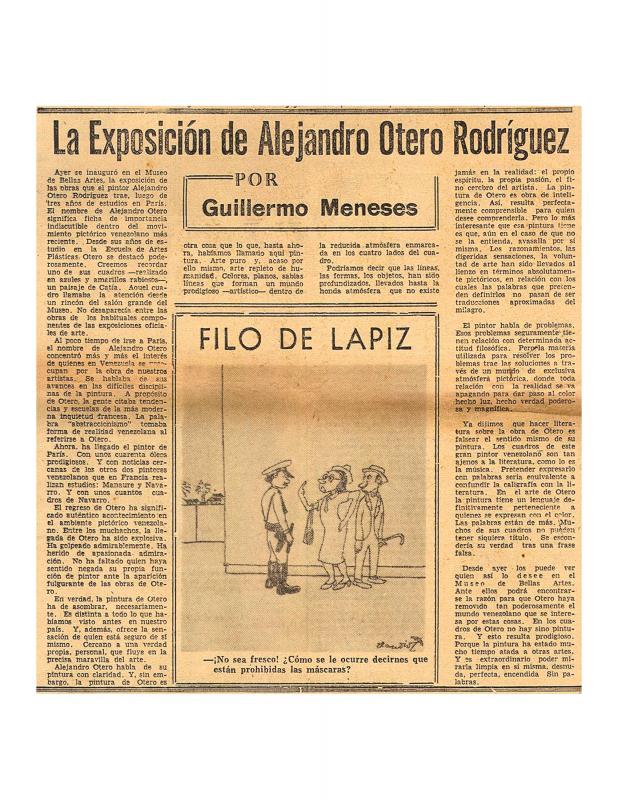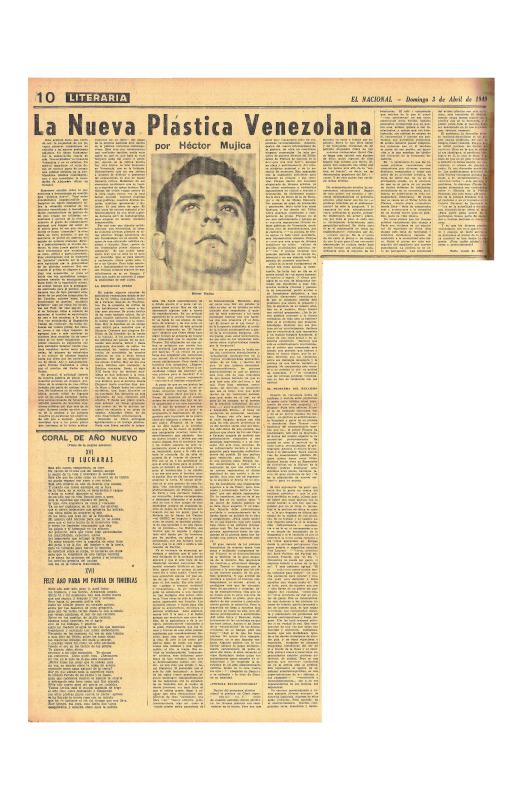After presenting the first solo exhibition of his career (Alejandro Otero: Still-Life, Themes and Variations) consisting of twenty-three oil paintings at the Pan-American Union in Washington, DC on December 28, 1948, Alejandro Otero (1921–90) presented an exhibition of thirty-seven canvases at the Museo de Bellas Artes de Caracas (from January 30 to February 9, 1949). The catalogue that accompanied the show, Alejandro Otero, is a key document in Venezuelan art history. Beyond the quality of its contents, it marks the beginning of a central moment in the history of modern art. First, it is the catalogue for Otero’s first solo show in Venezuela, after which he would become one of the great masters of international and Venezuelan abstraction. Second, it is a testament to the first exhibition by the abstract artist in his country, and therefore to the pioneer of abstraction in Venezuelan art. Third, Otero’s exhibition in 1949 caused a great commotion in the nationalist cultural community and gave rise to a debate in the press that would last into the 1950s, known colloquially as the controversy of Las Cafeteras [The Coffee Pots], because those were the works that made the biggest impression on the public, although the artist also exhibited other series and works (Las cacerolas; El pote azul; El candelero florentino; El candelero verde; El pote y el espejo de tres cuerpos; El cráneo y el espejo de tres cuerpos; Los cráneos; La taza de la línea amarilla; La botella y la lámpara).
The contents of the catalogue possess even greater documentary value for the history of Venezuelan and Latin American art than the essay by French art critic François Sego. These include the selection of fragments of criticism, and the complete record (catalogue actually) of the series of canvases created by Otero over three years, beginning in the year after his arrival in Paris in 1945; that is, in October 1946 when, according to Boulton, he began Las Cafeteras series. This is a theoretical text that touches on elements of the psychology of art, aesthetics, and phenomenology, wherein the author investigates the features of modern painting and the crisis it experienced during this period (1948), and it is only in the last paragraph that the author mentions Otero, almost as an illustration of his theories. It is worth noting that in a letter Otero wrote to Alfredo Boulton (Paris, October 17, 1948), published in the book He vivido por los ojos 1946–1974 by Ariel Jiménez (2001), he talks about all the preparations for his exhibitions in Washington DC and Caracas without mentioning the author of the essay.
For a previous letter by Otero to Boulton (April 10, 1948) written in Paris, see in the ICAA digital archive “Carta a Alfredo Boulton” (doc. no. 850255). For other critical texts on Otero’s work, see by J. R. Guillent Pérez, also a member of Los Disidentes, “Realidad e irrealidad. El postigo de Alejandro Otero” (doc. no. 1172158); the text by Guillermo Meneses “La exposición de Alejandro Otero Rodríguez” (doc. no. 1097092); the text by Roberto Guevara “La vertical vibrante de Maracay, 1968” (doc. no. 1168201); by journalist Héctor Mujica “La nueva plástica venezolana” (doc. no. 850512); and writer Elizabeth Schon’s “Los coloritmos de Alejandro Otero” (doc. no. 1172142).






